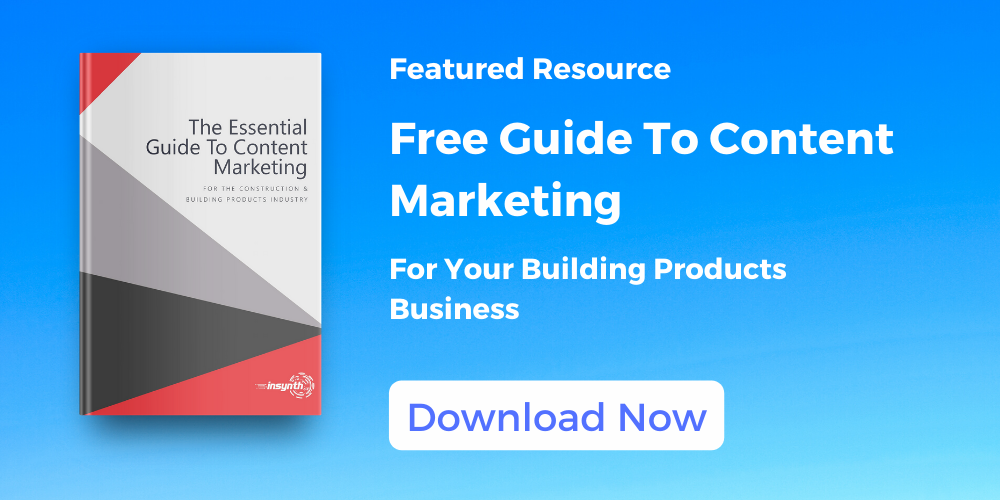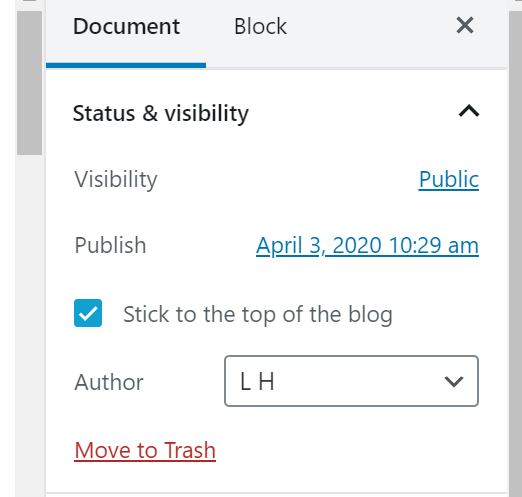
We all know that words are the currency of the web. The more SEO-driven content you have, the better chances you will have at ranking highly in search. If you’ve read any of our previous posts, this message will come as no surprise.
What’s different, however, is this ‘new normal’ that we’ve all been forced to adopt. Working from home is giving us more time to reflect, and it’s even allowing us to catch up on the things that we’ve let slip in recent months.
And for many, this means addressing your content strategy.
The purpose of this blog is to give you some practical guidance that you can implement now, in order to prepare for the post-covid future.
Tip #1: Develop Content To Help Your Prospects
Content’s ultimate purpose is about helping your audience of architects and specifiers to solve problems. In recent weeks, we’ve seen businesses, employees and communities face new and unprecedented challenges, and high-quality, relevant content can be invaluable at a time like this.
However, we must acknowledge that what architects found useful a few weeks ago may not be as useful now.
Therefore, we should shift our focus from product-centric content to content that will allow our prospects to gain further insight and development.
In terms of preparing for the future, I’d start by thinking about what challenges your audience will be facing at the end of this and what information they’ll need. This could mean a heightened application of health and safety measures; it could mean more of a push towards sustainability. Without knowing your individual product offering, it is difficult to offer concrete advice here. It’s highly important, however, that you start thinking about what the post-Covid future will look like for the construction industry.
To summarise,
- Remain laser-focussed on audiences’ most pressing needs by observing behaviours on social channels, and by monitoring engagement rates on new content being published.
- Strive to deliver unique value without asking for anything in return – instead of promoting your products and services, focus on being helpful.
- Be prepared to quickly adjust your content strategy as this rapidly changing situation continues to evolve.
Tip #2: Don’t Let Coronavirus Stop You from Developing Content
It’s natural to apply the breaks when something like this happens. We’ve had many people tell us that they’re going to focus all their marketing efforts on social media and nothing else. Our advice here would be to avoid that strategy.
Whilst it may feel as thought the world has stopped, SEO hasn’t. Google is still working.
With that in mind, we shouldn’t neglect the SEO benefit that content can bring to our online presence.
So, whilst your competitors are in panic mode, you should be using this opportunity to produce content that will rank you higher than them.
Having said this, we do want to approach with caution, so as not to come off insensitive. Certain blog titles won’t resonate with audiences, so an element of flexibility is necessary.
Pro tip: Make your COVID post/announcement sticky. That way, it will always appear at the top of your blog, demonstrating that you’re addressing the situation and avoiding the accusation of appearing insensitive.
Tip #3 Track Website Analytics and Prepare to Adapt
A flexible approach is paramount when it comes to content marketing during covid-19. Many of our clients have seen a surge in website traffic since our lockdown began, and that’s not surprising considering more people are at home using the internet.
Website traffic should be closely monitored during this time to gain an understanding of what search terms people are using to land on your website. This information will give you clear insight as to what people in your space are interested in. Armed with this data, you can carve out a strategic content strategy based on audience behaviour.
This information also gives you an understanding of what pages need to be improved and optimised. It could mean adding more content to a webpage that you currently have, or looking closely at your Htags and Alt text to ensure that they are optimised for SEO. You should also ask yourself, are there opportunities on my most popular pages to convert website visitors?
Conversion tactics such as free content offers, sign-up forms and internal links to case studies will provide you with more opportunities to convert your website visitors into specifying your product or solution in the future.
So, use Google Analytics and Google Search Console to get a clear picture on what webpages are driving traffic, and optimise them!
Tip #4: Audit Your Current Offering
This downtime will allow you to assess what your current content offering is. Do you have useful eBooks and whitepapers? If so, do they need re-branding and updating? Are they gated with a form on an attractive landing page?
Your educational content is invaluable right now for your audience of CPD-seeking architects and specifiers. Incorporate your free guides into an email marketing campaign. Email is a great tool to use at the moment, so utilise it as much as possible and share your content with your contacts.
Please note: Whitepapers and eBooks are great; product brochures, not so much. Remember to keep your content educational and not self-promotional.
Tip #5: Use This As a Chance to Get Ahead of the Game
We’ve touched on this subtly throughout, but I just want to reiterate this important point. Whilst things will be quiet on the project front, you should be using this time to set up your content strategy for the future.
With more people on your team working from the comfort of their own homes, it’s a great chance to make content as collaborative as possible. Involve the technical team and Involve the sales reps: you’ll be surprised at the quality of your content with those added expert insights.
Conclusion
To summarise, I wanted to share with you a list of key takeaways for your content marketing strategy.
And if you found this post useful in any way, we’d love to hear from you. Remember:
- Don’t create content for the sake of it. But maintain a regular publishing schedule.
- Don’t self-promote or appear to capitalise on the pandemic.
- Focus on your client’s needs. Always ask yourself, “will this help my customers?”
- Get regular feedback on customer needs.
- Determine the value that you can provide that’s unique to your company.
- Review scheduled content and make sure it’s not inappropriate or insensitive.
- Be agile and prepared to change your strategy as the climate around Covid-19 changes.
- Be proactive and plan your content for the post Covid-19 future.
- Keep an eye on your website analytics and tweak your strategy based on data.
- Continue to develop and publish content that helps your longer-term rankings and SEO.
As experts in content marketing within the building products and construction industry, Insynth works closely alongside you to produce content that builds awareness, drives traffic and helps educate your audience of architects and specifiers. To find out more, don’t hesitate to talk to one of us today.
About Insynth
As the only HubSpot certified agency to major on construction marketing, we bring together construction marketing strategy, digital strategy, website design, SEO, content marketing, email marketing, sales automation, marketing automation and HubSpot CRM implementation to produce successful campaigns and great results for our clients.


